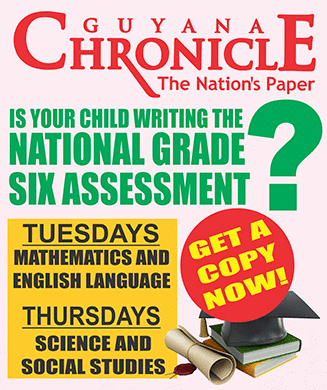THE government’s mid-year report on education spending offers an impressive headline figure: $81.9 billion invested in the first half of 2025, nearly half of the sector’s total annual allocation.
The scale of investment is undeniable. Classrooms are being built, teachers are being trained, digital access is expanding, and tertiary education is undergoing rapid transformation.
But while these accomplishments deserve acknowledgment, they must also prompt the deeper question an editorial cannot ignore: Are these massive investments translating into sustainable, equitable improvements in learning outcomes?
The administration’s ambition to deliver “world-class education” is backed by visible action. Four new nursery schools have been completed, dozens of primary and secondary school projects are underway, and new dormitories aim to expand access for hinterland students.
The $3.5 billion spent so far on the school meals programme, feeding nearly 88,000 children, underscores the government’s stance that nutrition is foundational to learning.
The continuation of the Because We Care grant, distributing over $11 billion to more than 203,000 students, reflects a similar belief.
These efforts are complemented by improvements in classroom resources. Nearly 50 new nursery book titles have been developed, hundreds more for primary and secondary schools are in the pipeline, and $2 billion in school grants target materials often overlooked in the broader budget conversation.
Meanwhile, the historic improvement at the National Grade Six Assessment, where pass rates surpassed 50 per cent in all core subjects for the first time, suggests early signs of progress.
Yet, progress must be measured with care. Infrastructure alone does not guarantee quality.
More textbooks do not automatically lead to better comprehension.
And while the NGSA results are encouraging, one year does not constitute a trend, nor does it reflect conditions across all regions, particularly in the hinterland where disparities remain stark.
The government’s aggressive digital push has resulted in internet access in dozens of schools, expansion of the Learning Channel, six new digital channels and 2,300 digital learning boxes all signal intent.
But these initiatives require sustained technical support, reliable power, and teacher training to ensure they do not become underused investments. The same concern applies to the Hinterland/Riverine Solar and Satellite Project, which may mark a breakthrough in access but needs long-term maintenance commitments.
At the tertiary level, the government’s decision to make the University of Guyana tuition-free has had a predictable effect: applications have soared to 11,600.
The institution also achieved universal accreditation for the first time, an achievement worth celebrating. But surging enrollment demands corresponding investment in faculty, facilities, and programme quality.
Writing off $1.5 billion in student debt and awarding 9,741 GOAL scholarships expands opportunity, but rapid expansion must not outpace standards.
Technical and vocational education has similarly gained momentum, with a new 10-year national policy, new training centres, and thousands trained through BIT. This reflects a welcome recognition that a transforming economy requires a workforce skilled beyond traditional academic pathways.
The government deserves credit for its aggressive investment and evident commitment to education at all levels.
But the public deserves assurance that these resources are being matched with rigorous monitoring, transparent evaluation, and long-term planning. Money can build schools, but only accountability can build a world-class education system.
The mid-year numbers show a sector in motion with noted transformation. The challenge now is ensuring that this unprecedented investment becomes more than a balance sheet accomplishment.
It must become a sustained, measurable uplift in the lives and futures of Guyanese children, whether in Georgetown, Jawalla, Kwakwani or Kopinang.



.jpg)







